Saturday, September 6: This morning, Caleb and I take a taxi to the south of Nanning to visit the mountain called Qing Xiu Shan. We share the 40 yuan (~$6.50) cost of the taxi ride. We arrive at the West Gate Ticket Office, where we find a stepped series of frogs spitting streams of water at each other. Try as I may, I cannot capture the water streams coming out of their mouths. Every time I’m a fraction of a second too late or too early. That doesn’t stop me from trying.
As always in Nanning, it is hot and humid, with temperatures about 92 degrees Fahrenheit and 70% humidity. You can see the humidity in the air.
Qing Xiu Shan is spread over 13 square kilometers, of which 6 square kilometers have been built and open to the public. The Scenic Spot has numerous peaks, green trees, amazing carved rocks, steep cliffs, clean springs and rare stones (QingXiu Shan Tourist Attraction).
Around the perimeter of the Bronze Drum Stage, we find statues honoring all the different ethnic groups in Guangxi Province. All the information below is taken from the plaques on the statues.
The Gelao people are an ancient nationality in southwest China. The Gelao language is their native tongue and they have a lot of folklore and folk songs, including “Song of Eight Immortals” and “Cowhells Dance.” Their festivals include Worshipping Tree Festival and Festival of Worshipping Ancestors with Beef Heart.
The Yi people moved to the mountains of Guangxi from Yunnan Province. There are three branches, the White Yi, Black Yi and Red Yi. They live on mountains and do farming. They speak the Yi language but have different dialects among them. They love to sing and dance and their festivals include the Tiaogong Festival and Torch Festival.
The Shui people speak the Shui language and live on rice agriculture. They once created the “Shui script” by imitating the Chinese characters and a unique calendar that takes September as the beginning of the lunar calendar and August as the end of the year. They are good at embroidering and like singing Huadeng opera. They follow the marriage custom of “no marriage with member of the same clan.” Their traditional festivals include “Dragon Boat Festival” and Mao Festival.
The Jing people migrated to Baibu Gulf from Do Son, Vietnam after the Ming Dynasty. Their livelihood is marine fishery and farming. They are the only minority living along the coast and the only one involved in marine fishery among Chinese minorities. Their traditional festival includes “Ha (Singing) Festival.”
The Mao Nan people live on rice agriculture and agriculture on hilly land with various avocations as their sidelines. They love singing folk songs and are skilled at handicrafts of knitting bamboo skin wares, carving rocks and woods, etc. “Maonan Beef Cattle” they elaborately feed is famous for its fresh texture and is well sold overseas.
The Hui people believe in Islamism for which there are always mosques in their places of residence. Their clothes, religious service, living and diet, traditional festivals and funerals keep the heritage of Islam. Most are engaged in industry and commerce. Sculpture, colored-lantern making and carpet making are their adept handicrafts. Their traditional festivals include “Iftar Festival,” “Corban Festival,” and “Maulid al-Nabi.”
Below is a collage of the different groups. Click on any of the photos for a full-sized slide show.
On the perimeter of the Bronze Drum Stage, sometimes referred to as the Copper Drum Platform, we find some pretty lanterns and greenery. We also find a man painting Chinese characters on the sidewalk with water.
The Copper Drum music platform is a grand sunken open stage and forms, together with the square, a huge open site for performances. The 40th Anniversary Ceremony of Guangxi, the closing ceremony of the Nanning International Folk Song Arts Festival, the opening ceremony of the China Gold Rooster Floral Film Festival and other events have been held here. The background sculpture of the stage is the “Remote History and Modern Charm,” focusing on the copper drum and supported by images of flowery mountains, wall paintings, figures, animals and plants.
The frog totem pillars at the two sides of the square and the stage represent the Zhuang people’s worship of the frog because they live on agriculture at the high-temperature rainy South China. In their opinion, the frog cannot only catch pests but also has strong reproductive capacity. Thus, their fear of the God was transferred to the frog, hoping the frog would bring the rice harvest and prosperous offspring to them (Qing Xiu Shan: Copper Drum Platform).
At the Bronze Drum, we find ourselves to be minuscule beings as we pose in front of the huge drum.
Next, we proceed along the shady Friendship Corridor, a cultural corridor integrating the features of the shelter bridge of the Dong people and South Ridge parks. The 618m length makes it the longest corridor of Guangxi. No nail or rivet is used in the corridor but only mortise and tenon joints, sufficiently showing the architectural skills of the Dong people. The corridor, integrating bridge, corridor, pavilion and tower together, is not only an ornamental, but also an ideal place for rest.
We weave in and out of the long corridor, where we see a lot of cool rocks and garden features.
The Friendship Corridor leads to a plaza and a huge circular walkway around a bright green field. The first thing we see is this huge dragon ball.
In a semi-circle around the dragon ball is the China-ASEAN Friendship Garden, where we can see tributes to the different countries of ASEAN, some of which are in the gallery below. At the ASEAN Totem Square, the totem stone sculptures symbolize the laws and legal systems of China and the 10 ASEAN countries. The totems symbolize friendly cooperation amongst the ASEAN countries.
Since Caleb speaks fluent Chinese, he easily chats with people. Some of the folks want to take pictures with us.
Around the perimeter of the park are lots of cool statues, and the first one is the Monkey King. We take turns posing with the statue.
We find other interesting sights along the way.
The Cougar above is a symbol of Provo City and Brigham Young University. Nanning and Provo signed a Sister City Agreement on September 27, 2000. The Cougar symbolizes leadership, loyalty, courage and determination in Native American folklore.
The Philippine Eagle is one of the largest and most powerful eagles in the world and is one of Davao City’s most famous symbols, often referred to as the Bird King. Endangered and very rare in the wild, the Philippine Eagle is being successfully bred in captivity at the Philippine Eagle Center. Nanning and Davao signed a Sister City Agreement on September 3, 2007.
Next we come to the Chinese Zodiac Park, where Caleb poses with his Chinese Zodiac character, the snake, and I pose with mine, the sheep. Sadly I took the picture of Caleb with his camera, so I don’t have it to post.
We also take turns posing with some humorous monkeys.
After all this walking and sweating, we come face to face with about a million steps leading to The Martyr Monument to Guangxi Student Army in Anti-Japanese War. We are already hot and exhausted, but we climb on up anyway.
It’s hard to get a front-on picture of the monument since we’re facing directly into the sun, but here’s a view from the side.
Little do we know at this point how much more walking we have to do. This mountain is huge! Part 2 of our walk will follow in another post. Even what we saw today is not everything there is to see. We’ll have to go back another day, or two, to see it all. 🙂

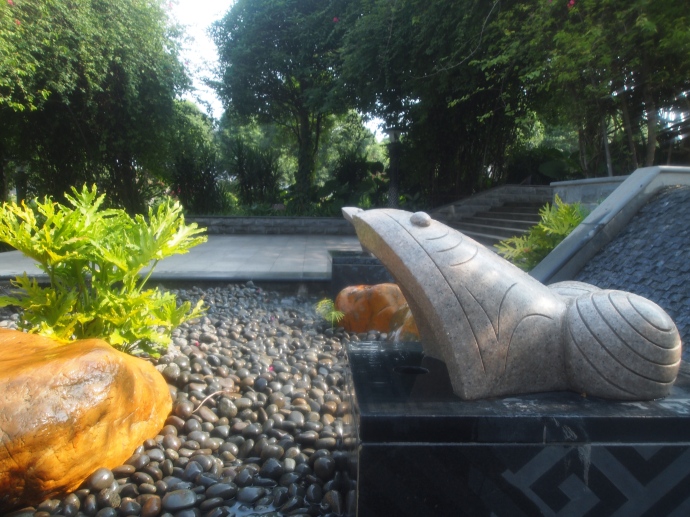
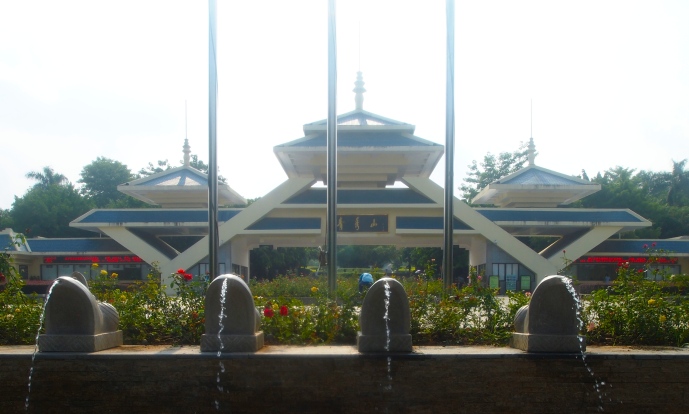







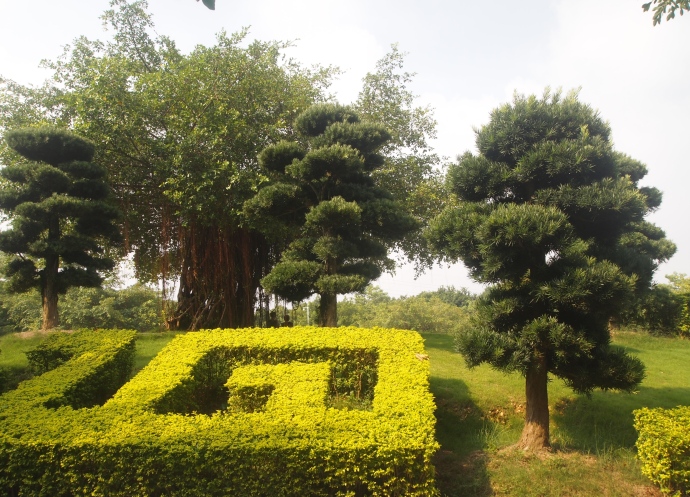

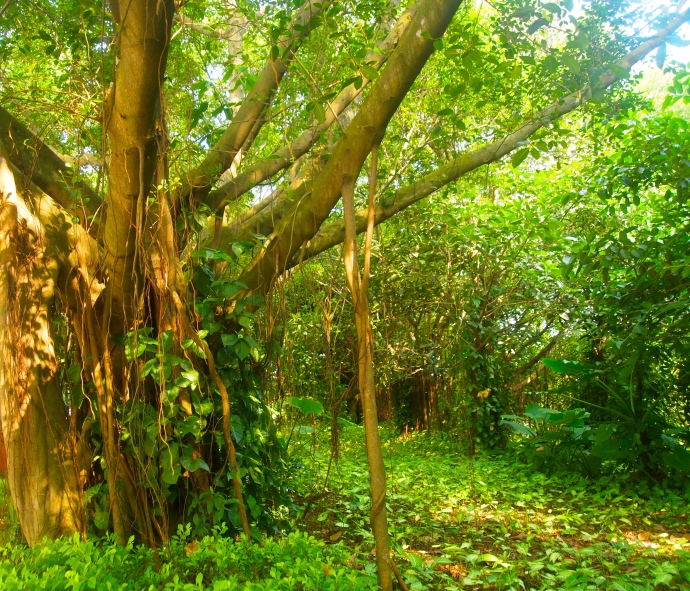
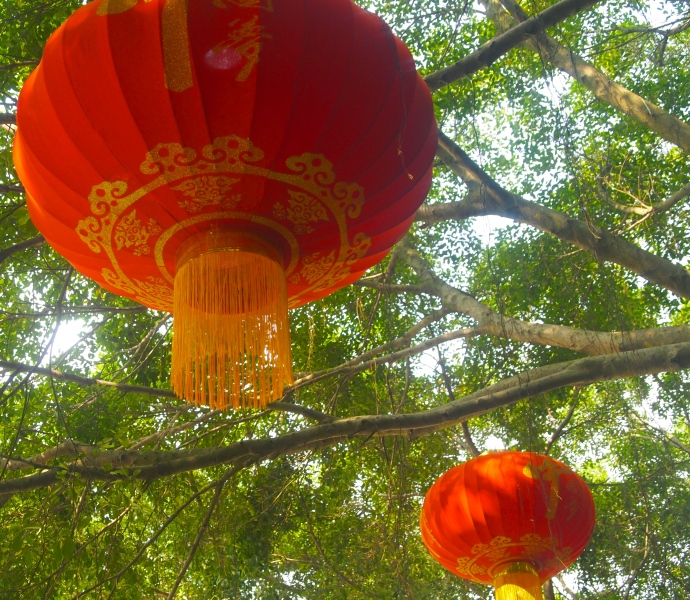
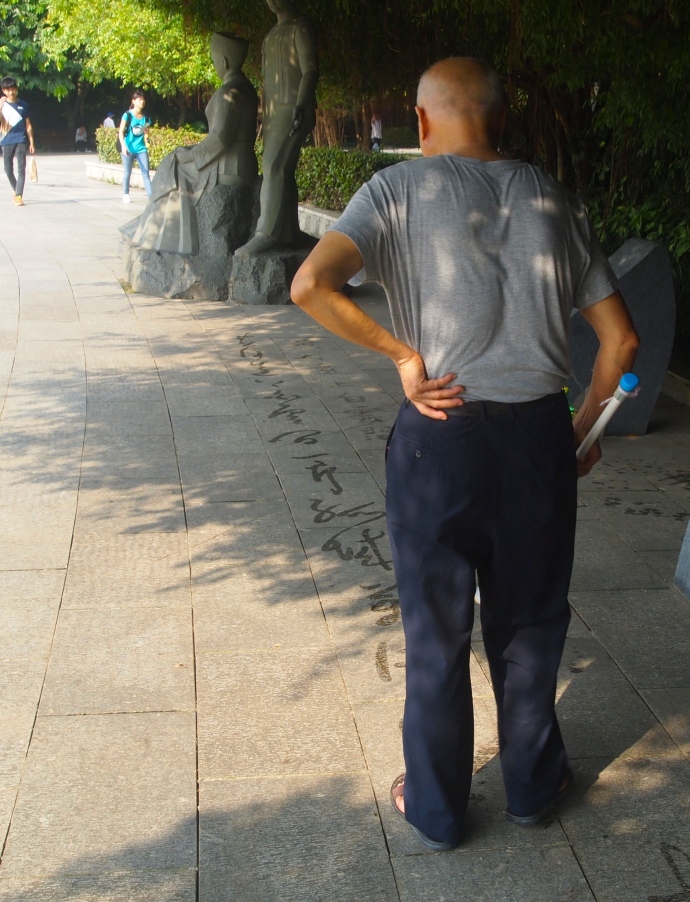
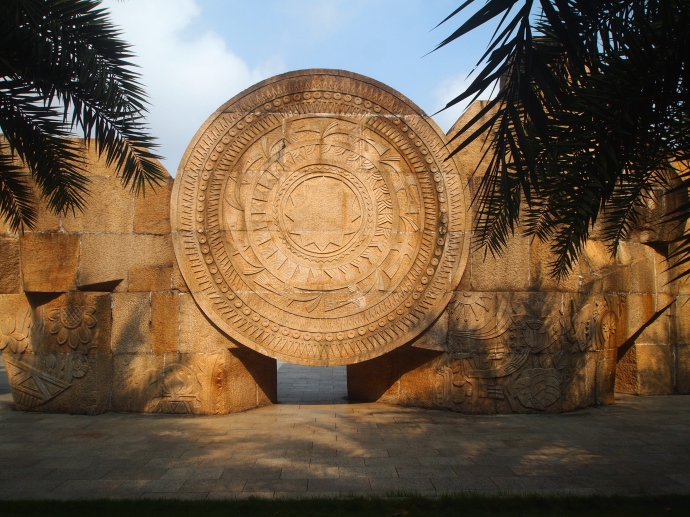
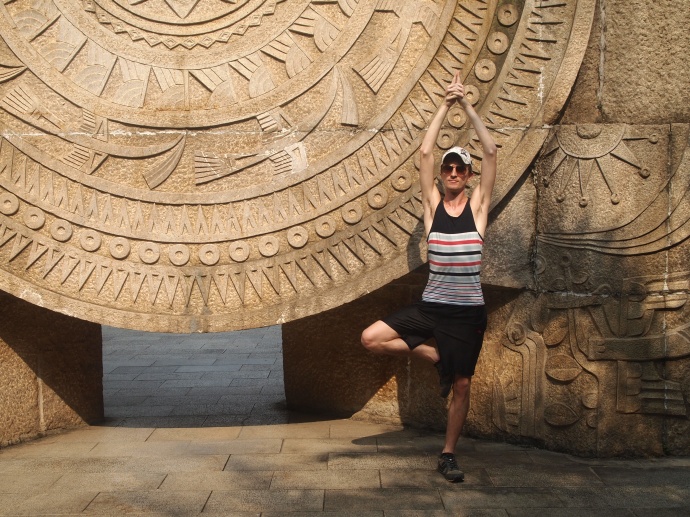
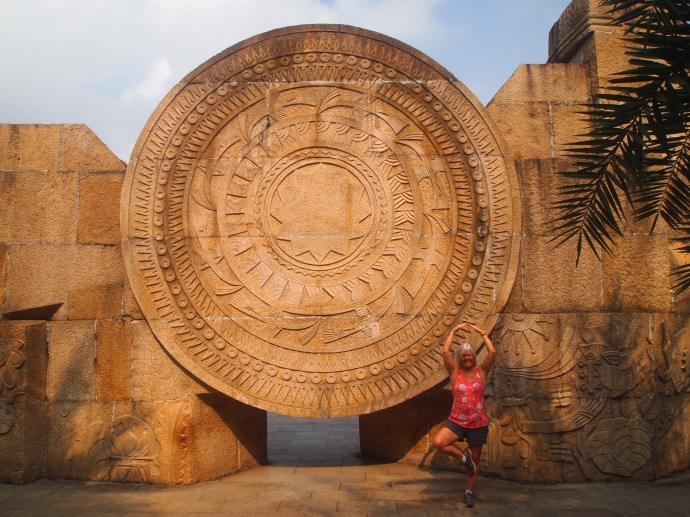

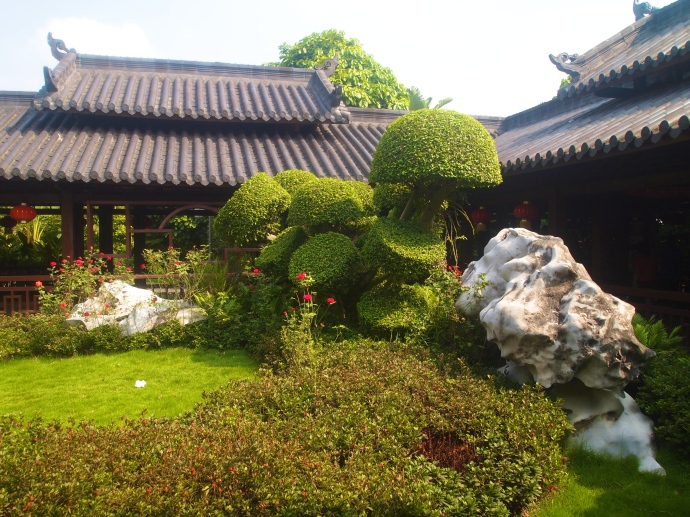
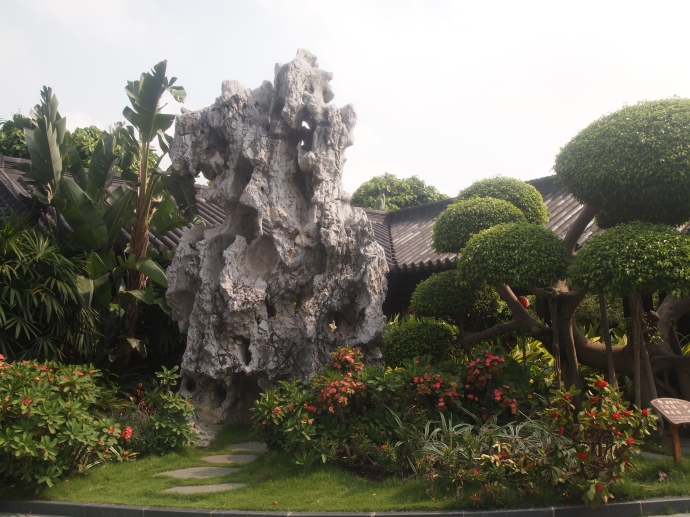
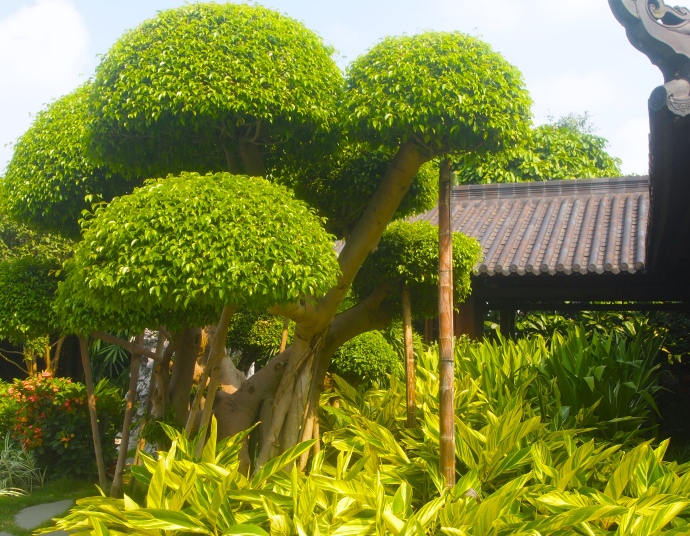

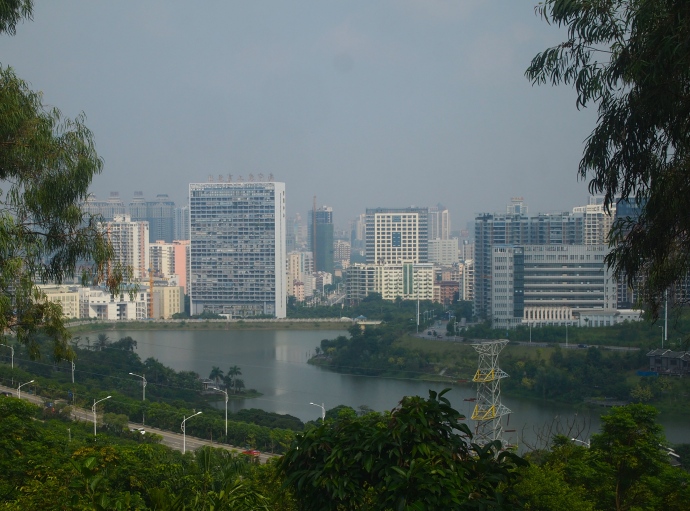


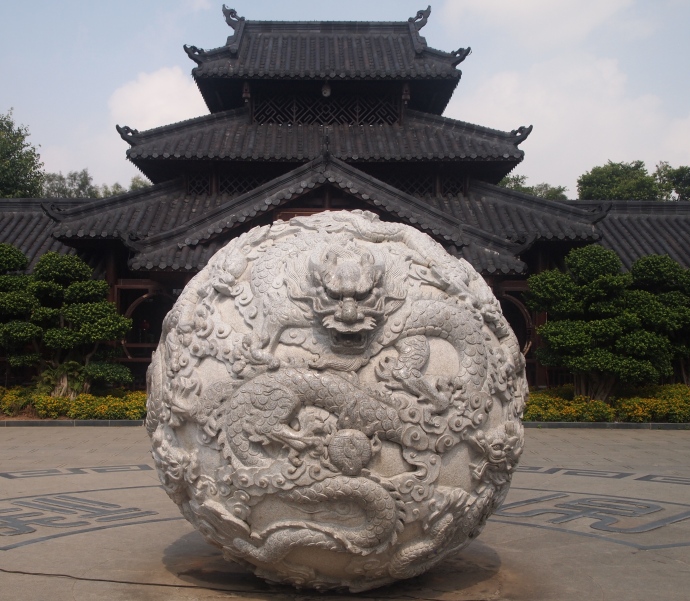



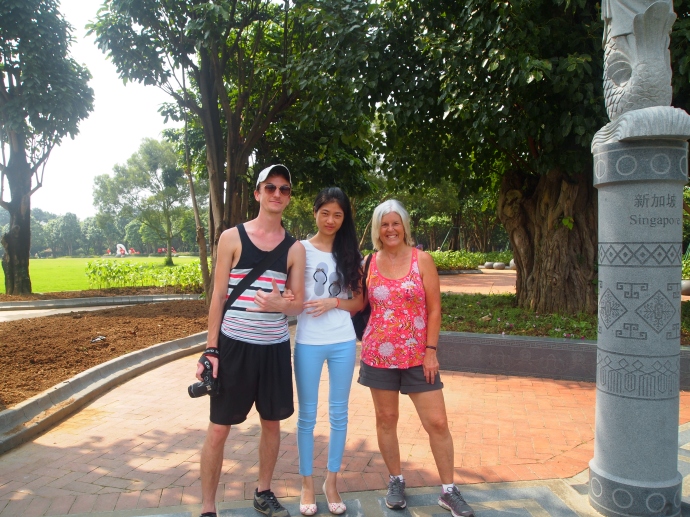

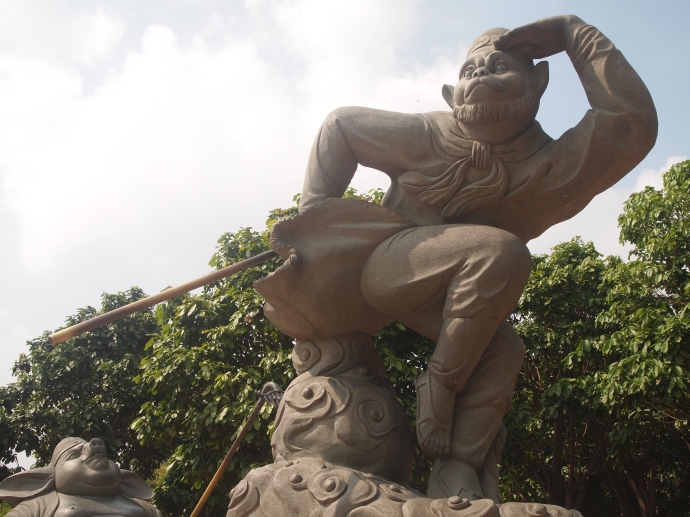
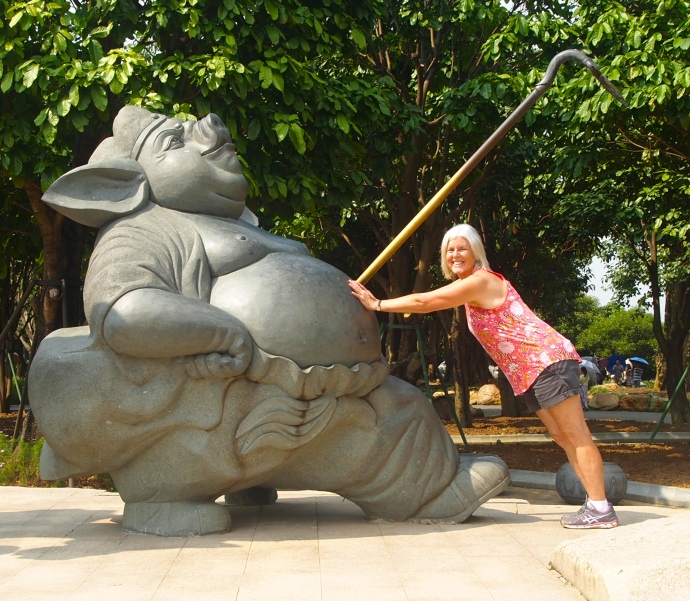













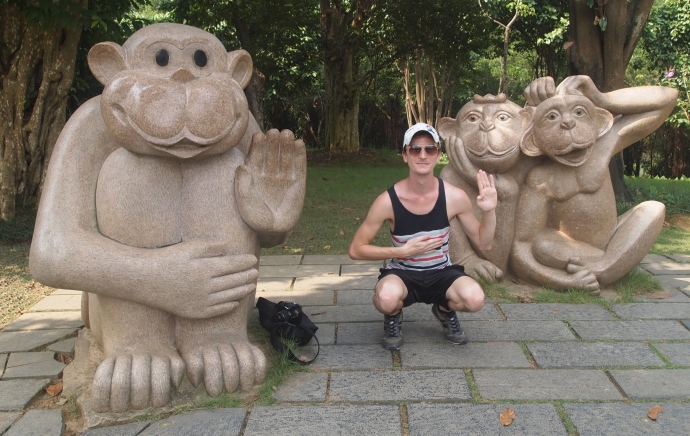
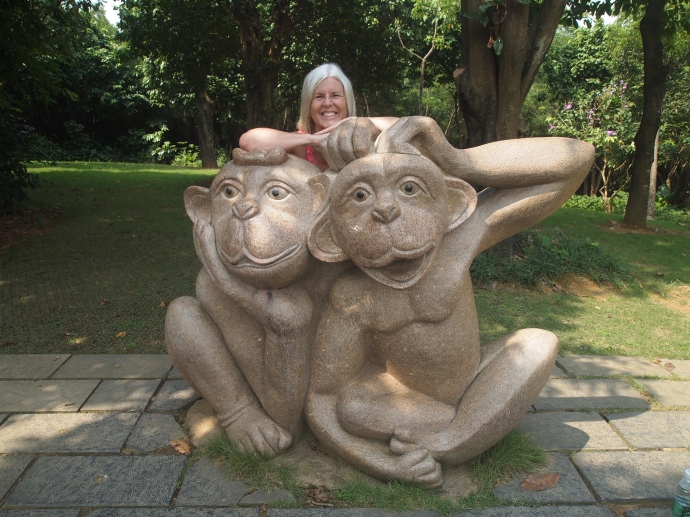
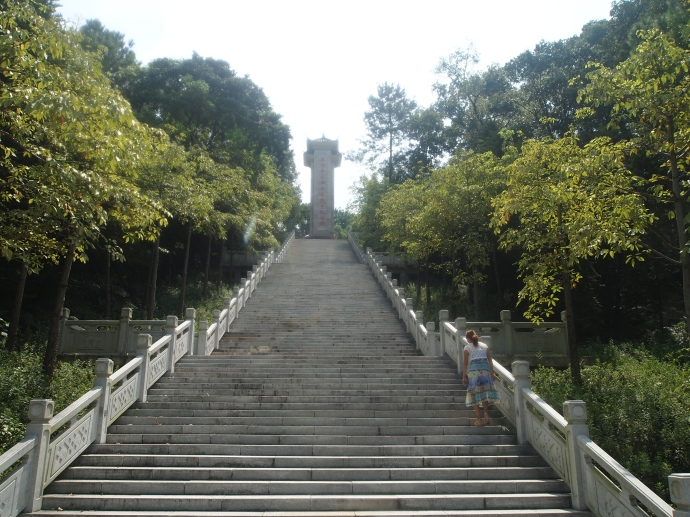
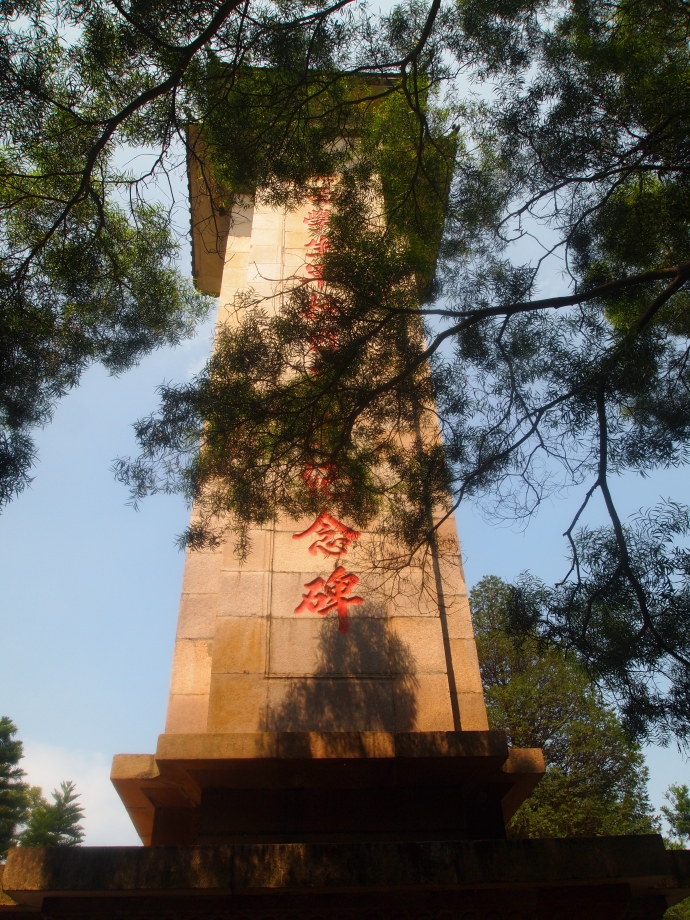

Such fun and colourful photos, Cathy. Love the poses, and those Chinese characters on the paving, and also looking down from the pavilion. Caleb looks like the perfect companion. 🙂
LikeLike
Thanks, Sylvia. I’m glad you enjoyed my expedition, and it truly was an expedition. I was wiped out after that one! Caleb IS the perfect companion. I hope he doesn’t mind continuing to explore with someone as old as his mother. 🙂
LikeLike
Forgot to say that those steps look like a great workout. 😯
LikeLike
Oh boy, were they ever! We went up so many steps and climbed so many hills, I’ve been sore for days!
LikeLike
Such a great set of beautiful photos.
LikeLike
Thanks so much, Cee. It’s so nice to see you here. 🙂 Thanks for coming along on my journey. xxx
LikeLike
A great blog, Kat. I learned something more about China. We were laughing here at Pigman and laughing monkeys. Sometimes these comments go astray, Kat. Yesterday I commented but it failed to appear. I did it again and it failed to appear again. I waited until this morning and still no comments there. This is my third try.
LikeLike
Pigman, the Monkey King and the laughing monkeys were quite funny, Dai! Crazy things you can find here in China. Sorry you had so much trouble commenting. I’m glad you finally made it through. It really is so nice to hear from you. You get triple stars for perseverance. 🙂
LikeLike
Third time lucky, Kat
LikeLike
Yay! Good work. Thanks for not giving up, Dai. 🙂
LikeLike
Your photos make me want to visit this area NOW! I love all the statues and sculptures, which are so imaginative and much more fun than a lot of the things I might see here (if indeed there were any statues and sculptures in a park!).
LikeLike
Thanks, Elaine. I’m glad my photos are enticing enough to make you want to visit. Keep in mind this is one huge mountain on the south of the city of Nanning. Nanning is a huge city and I’m not even sure yet what else there is to see around here. I’m hoping to go 4 hours northeast to Guilin and Yangshuo, immortalized in The Painted Veil and other movies. There’s also supposed to be a beautiful waterfall down by the Vietnam border. However, it remains to be seen whether there will be much more to be seen close at hand. That mountain is fabulous though, and I will go again because I didn’t see all of it in my first trip. 🙂
LikeLike
It all sounds like a wonderful adventure. Even if there is nothing much more to be seen nearby, several return visits to that mountain wouldn’t be a hardship! 🙂
LikeLike
I agree. I plan to make quite a few trips to that mountain, Elaine. 🙂
LikeLike
What a fascinating culture you’ve wound up in the midst of Cathy! All mixed marriages so no in-breeding? The park is lovely and your exuberant fun photos made me smile. Happy days! 🙂
LikeLike
That’s for sure, Jo! That park is something else! I couldn’t believe how huge, well-manicured, and populated with statues it is. Happy days to you too. 🙂
LikeLike
It didn’t take you long to find a great park/garden! Lovely photos, though it does look very hazy there and no way could I cope with those temperatures and humidity – I’d never get up those steps! Good for you 🙂
LikeLike
Haha, Jude, yes, I think we found the one place to go in Nanning! I mentioned to another teacher that we went there the first weekend and they said, “Oh no! Now you’ve done the one thing there is to do in Nanning. What will you do with yourself the rest of the time you’re here?”
It is very hazy here, but we also often have blue skies. The humidity is too much. This morning I went for a walk in 94% humidity. Yech!
LikeLike